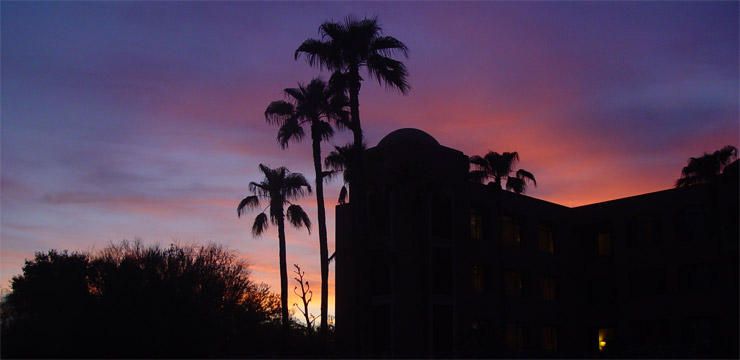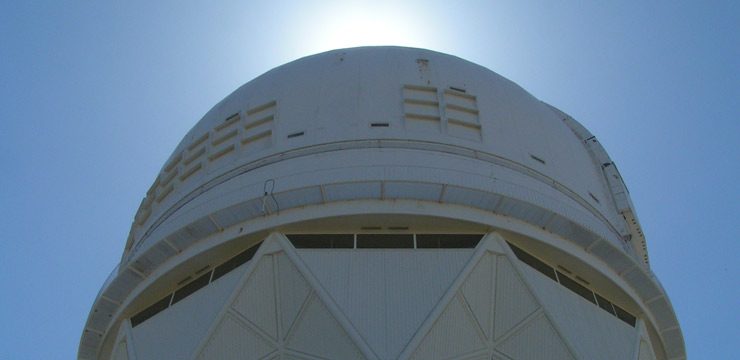
Ordinary turns into the Extraordinary
October 2011 :
Yet another business trip! This time I needed to take a quick jaunt west to Phoenix, AZ. I was to test a design concept at one location and visit a number of other stores while in the area. Here was the plan: fly down Wednesday afternoon, get car and into hotel by 7:00, eat, hook up to the internet, and call it a day. Work all next day and catch a flight back real early the next morning. Not much time for the ordinary to turn into the extraordinary—at least that’s what I thought.
The flight out and the first day went without a hitch. My window seat provided some great views as the Great Lakes went by and we crossed the Ohio and Mississippi Rivers. Large areas of flooded landscape could still be seen on each side of the rivers’ banks. The ground below then turned to a multitude of circular patterns, circles, primarily full, but many others in partial stages. They ranged from ¼ -3/4 filled circles with one 7/8 complete and noticeably standing out like Pac Man amongst the rest. The final approach brought us over the arid countryside while the pilot flew between the rising thunderheads as we descended. It was a very nice flight and I ended the day with a good meal, a tall cool beverage, and a comfortable bed.
The next morning I was up early. I brewed a cup of coffee and sat out on the ground floor patio of my room. I was sipping my wake-up juice, taking in the scenery and watching the wildlife gathering. Jack Rabbits and some type of desert Quail were rummaging about the sage brush. I even caught sight of a lone Hummingbird looking for nectar from the flowered plants. I lifted my cup for another sip and movement in the brush caught my eye. The rabbits and quail scattered in all directions. There, not more than 30 feet from me was Wiley Coyote. I grabbed my camera and snapped a couple of pictures. To my dismay he stared at me calmly, then turned and trotted away. It appeared that Wiley missed out on breakfast that morning.
The rest of the day was filled with store visits, some stunning scenery, and incredible heat. The outside temps had reached 118 degrees by the end of the day. (Travel tip—avoid Phoenix in August.) Ended the day back at the hotel and yet another cold beverage. Later, as I walked to diner, I noticed the wind had begun to pick up noticeably and the southern horizon had become obscured. The sky had acquired an adobe glow and the palm trees swayed and strained to the wind. The air’s grittiness could be felt as it gusted…no outside table tonight. I had my meal inside and watched the reports of the Pombo (sandstorm) on the local news. The Pombo was followed by a lengthy electrical storm with continual flashes of heat lightning. It was quite the show, but time to call it a night. The 4:00AM wake-up call and a mad rush to the airport was on the agenda for tomorrow.
I made it to the airport and was looking forward to getting home. I was to meet my wife Lisa, her brother and a friend for supper that evening. I had enjoyed my brief visit and nature’s show, but was happy to be making my way back home.
Now, as interesting as the trip had been so far, things were to take an astronomical twist. As I was seated at the gate, I noticed a pair of gentlemen arrive totting a grey locked container. The container was an approximately 2 foot square fiberglass case with a NASA logo sticker on it. I could hear bits and pieces of their conversation, which appeared to be related to testing and adjustments made to some equipment. When I boarded the plane I happened to be seated in front of the gentlemen and the case. Apparently, whatever was in the case warranted its own seat. Everyone got seated and we taxied to the runway. We lifted off and as we rose, Phoenix could be seen nestled in the dessert valley flanked by the hills and mountains. There appeared to be hazy patches of sky with defined edges and what appeared to be the remnants or beginnings of another Pombo. Well, that was farewell to Phoenix. Rhode Island, I’m on my way.
Being as inquisitive as I am, I couldn’t resist inquiring of my fellow passengers what was in the mysterious case. The two gentlemen turned out to be David J. Lassiter and Norm Lee of NASA, both currently working on the GPM (Global Precipitation Measurement) Mission. We chatted on and off throughout the flight to BWI (Baltimore/Washington International). The craft will assist in the gathering of precipitation measurement around the globe to document and analyze trends and patterns. It appears the two were transporting one of the S-Band transponders to be used in the core spacecraft. The mission itself is a joint US/Japan venture with a launch date currently scheduled for December of 2013 from Tanegashima Space Center, Japan.
The spacecraft is currently under construction in a 100,000 clean room at the Goddard Flight Center in Greenbelt, MD. David noted “Once the transponder is integrated, next week or the week after depending on completion of current work, it will become the communication link used by the control center, same as on orbit. This will continue for the next two years leading up to flight”. David and Norm had picked up the component from a manufacturer facility in Phoenix. Due to some less than favorable experiences with commercial shipping David and Norn were sent to insure its safe arrival. It appeared nothing was too good for the S-Band. It was provided the window seat and became quite the celebrity during the flight.
I was not the only one to take notice of the square little fellow in gray, but one of our attractive flight attendants seemed quite interested in the fellow. She also inquired on his status and background, which David and Norm graciously conveyed. I chatted with David on the mission a bit and also spoke with Norm on one of his past projects at Palomar. It seems Norm had worked at Palomar on a project associated with low power lasers and had received phenomenal access at the site. Norm admitted his astronomical pursuits are not behind the eyepiece, but he was in awe of the facility.
David and Norm were great flight companions and very gracious for taking the time to give me the scoop on the GPM Mission. David provided the following Web Link, http://pmm.nasa.gov/ which also covers its predecessor mission (TRMM) as well. David noted, “GPM is a large spacecraft. You can get a sense of this from the video of the antenna deployment system (2 meters+) then compare that to the graphic of the fully deployed spacecraft with instruments and solar arrays”.
So the ordinary can change without warning. What started out as an ordinary business trip changed into the extraordinary! Which meant participation in the flight test of a future space mission component, at least in my mind.
Related Topics




